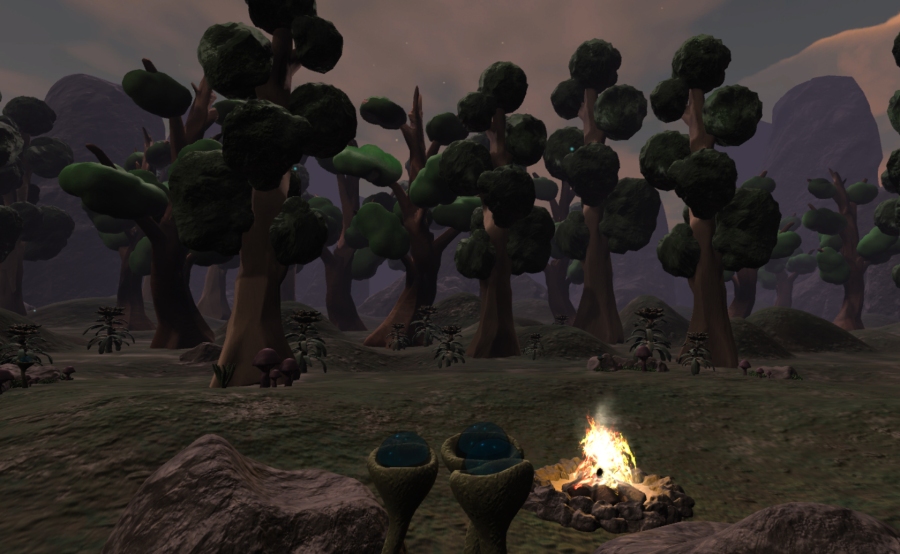Media Coverage
Pauline Verduzier, “Explorer le genre grâce à la réalité virtuelle, January 6, 2021. https://www.letemps.ch/societe/explorer-genre-grace-realite-virtuelle
Benjamin Hoguet, Canada Media Fund – Fonds des médias du Canada: Body, Avatar and Gender in Virtual Reality [English] / Corps, avatar et genre en réalité virtuelle [Français]
Description

Queer and Trans Narratives in Virtual Reality is a prototype application that was designed for Dylan Paré’s Ph.D. research. It is a narrative project which uses multiplayer, virtual reality to explore relationships between gender, sexuality, and technology. It was exhibited at Calgary’s Beakerhead science and technology festival in September 2018, at TEDx Calgary’s interactive engagement zone in October 2018, at the Banff Centre for Arts and Creativity in March 2019, and Telus Spark Science Centre’s Adults Only Night in May 2019.

In the VR prototype, people are invited to explore a multiplayer VR world with a friend. Together, they interact with narratives of queer and trans experiences in STEM and engage in conversations with their friend.
By transporting people to virtual environments that encourage reflection and play through embodied experiences, we open up new possibilities for imagining and experiencing the social relations of gender and sexuality in new ways that are inclusive and supportive.

All of the 3D models in the VR world were made in VR using Oculus Medium and Tilt Brush creative tools, and the application was built and programmed in Unity. The design team includes Dylan Paré as the lead designer, Scout Windsor as the 3D modeller, John Craig as the programmer, and Dr. Pratim Sengupta, Dylan’s Ph.D. supervisor. The prototype design began in January 2018 and was first exhibited to the public in September 2018.